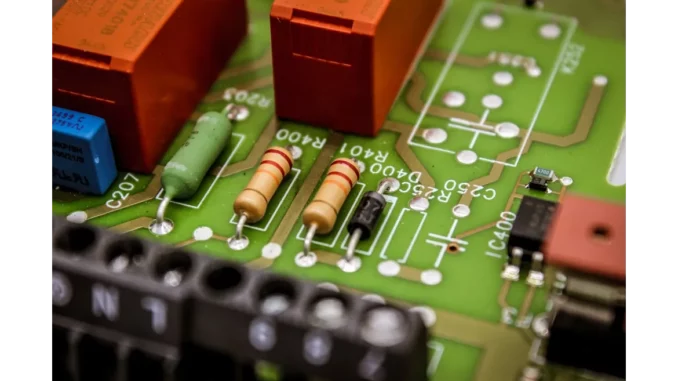
Summary
STT-MRAM Poised to Revolutionise Memory Tech with Robust Magnetic Field Tolerance
In a significant breakthrough in memory technology, Spin Torque Transfer Magnetic Random-Access Memory (STT-MRAM) emerges as a promising alternative to NOR flash and volatile memories. According to recent research led by Dr. Mark Evans, STT-MRAM demonstrates impressive resilience to ambient magnetic fields, positioning it as a viable option for next-generation electronic applications. “The implications of our findings are quite significant,” Dr. Evans stated, highlighting the technology’s potential to transform the memory landscape.
Main Article
Spin Torque Transfer Magnetic Random-Access Memory (STT-MRAM) is increasingly gaining attention as a potential successor to traditional memory technologies like NOR flash and SRAM. This interest is bolstered by recent findings published in the IEEE Electron Devices Magazine, where Dr. Mark Evans and his team explored the impact of external magnetic fields on STT-MRAM.
A Compact Solution
“The limitations of NOR flash and SRAM are becoming more apparent as we push the boundaries of technology,” Dr. Evans elaborated during our discussion. NOR flash, commonly utilised for code storage, struggles to scale below 28nm, presenting a significant hurdle for miniaturisation. Similarly, SRAM faces challenges due to its substantial cell size. In contrast, STT-MRAM, with its single transistor selector, offers a more compact and efficient solution. This makes it a compelling alternative for embedded electronic applications, where space and efficiency are paramount.
Magnetic Field Immunity
A major focus of Dr. Evans’s research is the susceptibility of STT-MRAM to ambient magnetic fields, a concern that has historically hindered its adoption. However, the study reveals that STT-MRAM’s magnetic immunity is robust enough for most practical uses. According to the International Electrotechnical Commission’s (IEC) standards, devices in regular operation should withstand magnetic fields up to 1.26mT. Dr. Evans’s team found that STT-MRAM devices can handle up to 100mT, depending on the specific application. This substantial tolerance suggests that, once installed on a printed circuit board, STT-MRAM is unlikely to encounter problematic magnetic fields in typical environments.
Data collected from various settings, including households and vehicles, supports these findings. “In a car, for instance, the ambient magnetic fields were generally less than 1mT, except for certain sources like magnetic phone holders,” Dr. Evans noted. “The key takeaway is that magnetic fields drop off rapidly with distance, reducing their impact on MRAM.”
Historical Precedence and Practical Considerations
Dr. Evans referenced the longstanding use of magnetic hard disk drives and magnetic tunnel junctions, technologies that have successfully operated without significant interference from ambient magnetic fields. This historical precedence, combined with MRAM’s 15-year track record, underscores the potential for STT-MRAM to thrive in similar conditions.
However, Dr. Evans emphasised the importance of caution during chip handling. “While the chip is generally safe in its working environment, precautions are necessary during handling to avoid strong external magnetic fields,” he advised. Simple measures, such as maintaining distance from potential magnetic sources or employing shielding in extreme cases, can effectively manage this risk.
Detailed Analysis
Economic and Technological Implications
The advancements in STT-MRAM have profound implications for the semiconductor industry and embedded electronics. As devices continue to shrink, the need for more compact and efficient memory solutions becomes critical. STT-MRAM’s ability to scale where NOR flash and SRAM cannot positions it as a valuable asset in the drive for miniaturisation.
Furthermore, STT-MRAM’s resilience to magnetic fields aligns with the growing demand for reliability in diverse environments, from consumer electronics to automotive applications. Its robust field tolerance and compact design could lead to widespread adoption, potentially reshaping the landscape of memory technology.
Impact on Power Consumption
Another crucial advantage of STT-MRAM is its potential to reduce power consumption, an increasingly important consideration in battery-powered applications. As devices become more complex and energy-efficient, memory technologies that offer lower power demands are likely to become highly sought after.
Further Development
The future of STT-MRAM appears promising, with ongoing research and development likely to enhance its capabilities further. Dr. Evans expressed optimism about its role in advancing electronic memory solutions, citing high-density achievements and efficient performance in normal ambient fields as key factors in its potential success.
As the industry continues to explore the possibilities of STT-MRAM, further studies will be essential to fully understand its capabilities and limitations. Stakeholders are encouraged to stay informed as new developments emerge, with additional coverage expected to delve deeper into the transformative impact of this technology on the electronic memory landscape.

